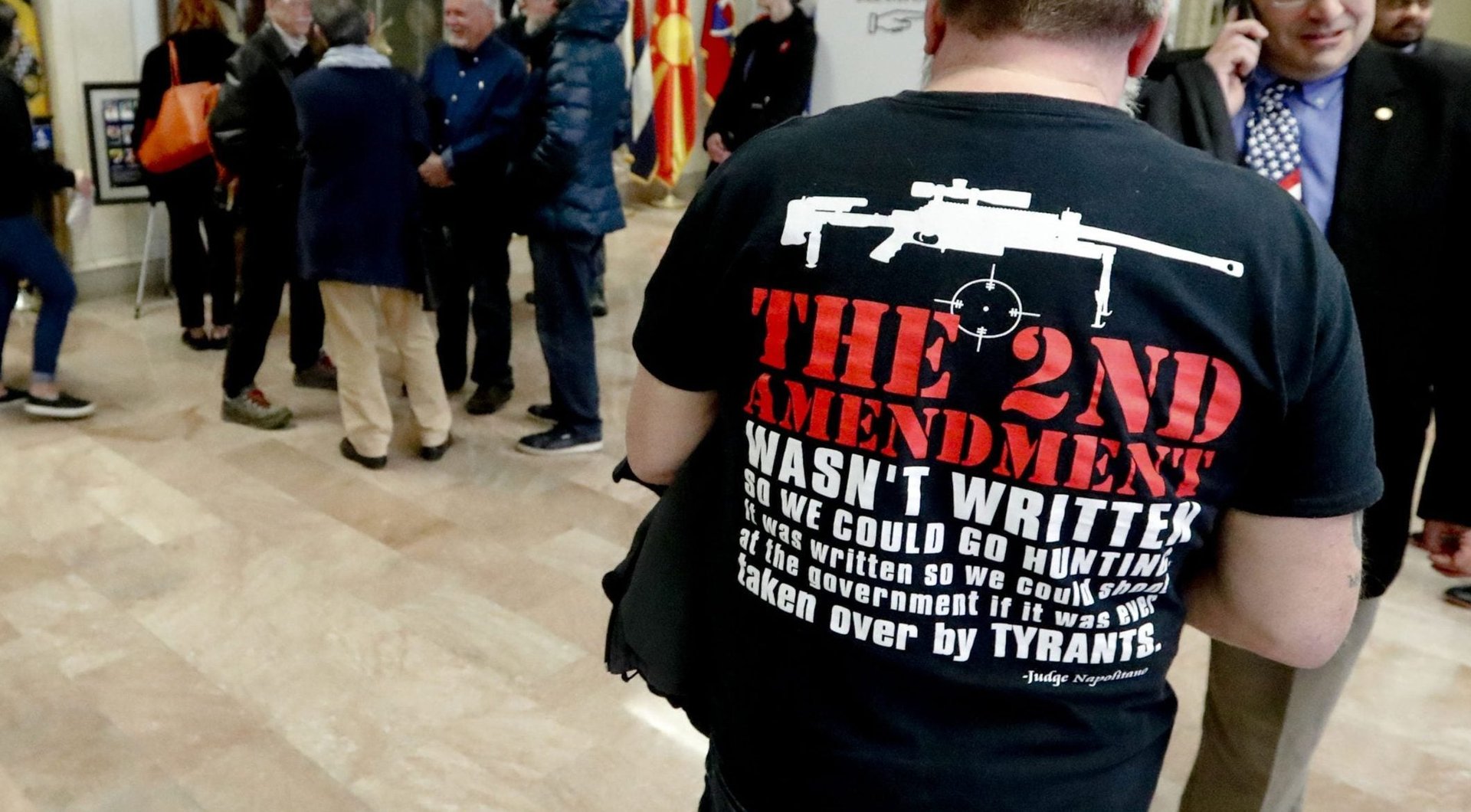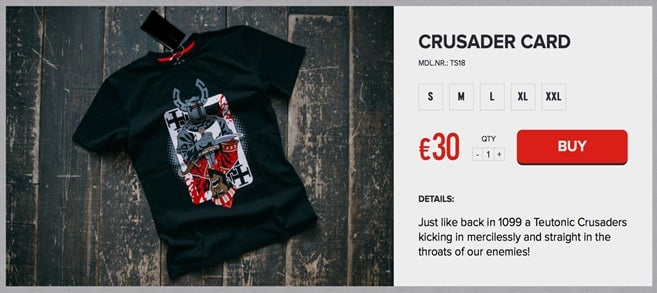The far right is really good at tricking you into giving it free advertising
In the months since the Christchurch terrorist live-streamed the murder of 51 Muslim worshippers, we’ve seen a flurry of discussions around the globe about how we can prevent online radicalization. Social media companies like Facebook and Instagram have created bans on content supporting white nationalism and separatism, while governments have pledged to crack down on companies that enable extremist content to take root and thrive on the web.


In the months since the Christchurch terrorist live-streamed the murder of 51 Muslim worshippers, we’ve seen a flurry of discussions around the globe about how we can prevent online radicalization. Social media companies like Facebook and Instagram have created bans on content supporting white nationalism and separatism, while governments have pledged to crack down on companies that enable extremist content to take root and thrive on the web.
But online radicalization doesn’t only happen when a person intentionally consumes extremists’ posts. It takes place in more banal and even accidental ways when people encounter extremist content in places they might not expect—such as shopping for a t-shirt.
Extremism … but don’t make it fashion
Over the past year, we’ve collected and analyzed screenshots of more than 1,400 t-shirts from 10 high-quality, mainstream-style brands that market to the far right in six countries.
You may note that we deliberately do not name brands, or offer links to any of the websites here. Our goal is to shed light on an insidious and harmful phenomenon while avoiding inadvertently creating marketing for them.
At first, our analysis produced few surprises—in fact, it confirmed what we already know from prior research in Germany: that major clothing brands are incorporating imagery and symbolism with far-right connotations into mainstream, popular clothing design—mostly marketed at youth consumers who tend to buy things that are trendy.
Similarly, the t-shirts we studied send clear messages, through writing, symbols, and iconography, that promote anti-immigrant, anti-Muslim, anti-Semitic, racist, and far-right ideology. Some show messaging that lashes out against the left, “snowflakes,” and mainstream society, some in violent ways.
One t-shirt uses a design that echoes the iconography of former US president Barack Obama’s election campaign, but depicts images of headgear designed for violent uses: combat helmets from the Christian crusades, World War II gas masks, and mixed martial arts headgear, alongside website text that tells consumers to celebrate “the real” diversity.

The clothing doesn’t only communicate ideology: consumers are also called to action, through symbols and messaging about valiant quests, heroic engagement, restoration of the nation, sacred land and heritage, and legends about Aryan origins. Historical references abound, along with strong valorization of violence in the name of a cause.
One t-shirt from a Russian brand depicts a white Christian crusader stabbing a dark-skinned victim with a beard and hat often used to cartoonishly signify Muslim identity, with the accompanying text: “Just like back in 1099 a Teutonic Crusaders kicking in mercilessly and straight in the throats of our enemies!” (sic).

Across six countries, we found that merchandise and clothing have a strong potential to radicalize consumers to far-right ideologies and call them to action.
What we didn’t anticipate, however, was how we would get targeted for the marketing ourselves.
Most likely we’ve all seen this play out when browsing for products on the web, and then seeing ads multiply in the margins every time you open a new browser on your phone or computer. But the active role we play, even as passive browsers, in bolstering ad strategies takes on a new sinister meaning when dealing with a market that literally banks on people’s prejudices.
No matter how careful we were on our devices—such as by enabling private browsing features in order to protect our information and block tracking—it wouldn’t be long before our social media feeds were filled with product advertisements carrying far-right messages.
In one particularly awkward moment, an Instagram feed popped up on a laptop during a class lecture and an alarmingly racist ad from one of the companies filled the screen. One of us felt compelled to exclaim to classroom peers, “I’m not racist! I’m just doing research.”
Experiences like this taught us more than we expected about how hate merchandise and brand websites can act as literal and ideological gateways to more and more extreme content.
We found this happens in at least three ways:
First, consumers can be exposed to far-right content when they view what we have come to think of as “extremist-adjacent” content—messaging that is at the periphery of the far right. Customers who search for t-shirts promoting second amendment rights or pro-veteran messaging in the US, for example, often encounter products on the same websites that are Islamophobic, misogynistic or make fun of “liberal snowflakes.”
Algorithms also drive consumers to far-right content based on what other customers have bought or what other YouTube viewers have watched.
Second, people who purchase products from brands marketing to the far right are quickly embraced by consumer communities and “brand fans” through social media feeds set up by fans to share photos of themselves wearing or displaying the products.
These feeds are more than image sharing sites. They also build community offline by advertising gatherings tied to far-right groups and ideologies. One fan group advertised a camping tour of sacred Scandinavian space said to be home to the mythical Hyperborea giants and Aryans, for example. In other cases, the brands themselves sponsor music concerts or mixed martial arts and fighting tournaments, which foster similar offline communities.
Finally, it is clear that the very policies intended to stem the spread of extremist content online—especially banning—can backfire in the case of clothing and coded iconography. Symbols and messaging have become ever-more coded in order to subvert bans in ways that are both playful, humorous and fun for designers and consumers. Meanwhile, the very existence of the bans helps reinforce and advance far-right and anti-government narratives about suppression, surveillance and governmental overstep.
The laundry list
Parents and educators have made great strides in teaching young people about internet safety and privacy when it comes to issues like sexual predators, or what kinds of personal information might be viewable by future employers.
But media literacy also needs to include education on how advertising algorithms work, and importantly, how to recognize extremist content, or the content that can swiftly lead to it. Even casual browsing or engaging on social media with extremist-adjacent products, websites, or groups can easily lead consumers down the rabbit hole of the far right.
Just like students, adults need similar media literacy training and public education about the wide range of ways that extremist ideology is carried into the mainstream—including through high-quality, mainstream-style clothing brands and products laced with encrypted far-right messages.
There is also always a delicate balance between exposing brands and groups to the public and serving as an inadvertent marketing tool that further amplifies their motives and messaging. Even if the intent is to shed light on something troubling, there is true harm in giving the far right too much oxygen. In writing this article, we wrestled with how to maintain that barrier, while highlighting these practices to raise awareness.
Don’t get us wrong. No one can blame the violence of the far-right on a t-shirt’s message. But we can’t ignore the many subtle ways that consumer goods, brand messaging, and online engagement with content that exists on the periphery of extremism introduce and reinforce far-right messaging and call consumers to action.